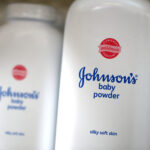A 30-year-old self-insurance pool has been paying off well for North Dakota political subdivisions, despite large claim losses in 2015.
“It’s worked extremely well,” said Steve Spilde, chief executive officer of the North Dakota Insurance Reserve Fund. “We instituted a dividend program in 1994, and in the 22 years that has been in place, we returned over $61 million in dividends to members.”
Contributions during that time were about $200 million, so about 30 percent of those premiums went back to members, the Minot Daily News reported.
“Basically the rule is, if we do well in a given year, the benefit of that goes back to our members,” Spilde said.
The cities, counties, townships and other members of NDIRF saw little dividend when 2016 arrived, though.
Incurred claim losses in 2015 were up $2.2 million about 35 percent greater than the previous high year. The first quarter of 2016 shows things appear to be returning to normal, Spilde said.
Last year was only the second time in its history that NDIRF experienced an operating loss. Very small dividend checks went to members. The checks were sent mostly to remind the governmental bodies that “easing up on the risk management pedal can have immediate and significant consequences,” Spilde stated in NDIRF’s annual report. Spilde noted too many serious claims last year fell in the category of “should never have happened.”
Claims involving “public assets,” primarily heavy equipment, had more than doubled from 2014 to 2015.
“It seemed to me in looking at some of them, it looked like the result of persons not having a lot of training or experience,” Spilde said.
The dollar increase in that category was $385,000, which compares to a $930,000 increase in automobile liability and physical damage claims, up 35 percent, and a $900,000 increase in general liability, up 28 percent. However, the Ward County Sheriff’s Office and Highway Department, which involve the greatest amount of equipment and vehicle use in the county, reported their claims in 2015 were typical of previous years. Minot Public Works and the Minot Police Department, two city departments that operate considerable vehicles and equipment, also reported claims were no higher than normal last year. Claims on police vehicles were average or below in 2015.
NDIRF’s general liability category includes lawsuits, such as would be generated from personal injury, challenges to zoning or other ordinances or employment practices disputes.
Active Minot lawsuits include a paving district dispute brought by residents of a north Minot neighborhood and a Freedom of Information lawsuit brought by an individual seeking police documents in North Central District Court. In federal court, NDIRF is representing the city in an employment-related dispute brought by former city attorney Colleen Auer and a discrimination complaint over a lease of airport property brought by a hobby shop owner against Minot airport officials. A zoning lawsuit brought by neighbors of First Western Bank is currently before the N.D. Supreme Court.
Ward County faces a lawsuit against its social services agency brought by a woman who alleges her newborn was wrongfully removed. Late last year NDIRF settled a lawsuit brought by the family of a deceased jail inmate for $230,000.
In cases of litigation, NDIRF investigates and determines whether to litigate or settle. In total numbers of cases, general liability and automotive/physical damage tend to be similar, Spilde said.
NDIRF receives about 1,800 claims a year and has around 500 to 600 in litigation at any point in time. The more serious claims of $10,000 or higher, open at any point in time, have increased in recent years from an average of 150 to 240, according to NDIRF’s 2015 annual report.
It’s not guaranteed, but NDIRF has never terminated anyone for high losses, Spilde said. However, political subdivisions can see their premiums rise if they show a pattern of unusual losses. The cost of defending a political subdivision in court isn’t necessarily considered a loss because the political subdivision may be absolved of fault by the court.
The U.S. District Court recently dismissed a couple of cases brought against Minot police officers. A longstanding case challenging the location of an area law enforcement weapons training range also was recently dismissed in state court.
Minot’s coverage is limited to $1 million per occurrence for general liability and $2 million for errors and omissions. The city has not exceeded those coverage limits in the past three years, according to the city’s annual financial statement.
To control claims, NDIRF provides in loss control and safety training for its members.
“Our goal is to try to provide the training and exposure to safety concepts that will help our members keep their risk down and keep the cost down for everybody,” Spilde said.
Two NDIRF representatives travel the state to look for trouble areas, such as uneven sidewalks and icy patches, and conduct defensive driving training.
The City of Minot has a Safety Committee that reviews any staff injuries for safety concerns and provides periodic safety bulletins to employees. The city’s Accident Review Board reviews traffic accidents involving city vehicles and may make recommendations for training or other actions to mitigate future risk.
The city provides employees with regular safety training and defensive driving courses. For instance, police officers complete an Emergency Vehicle Operations Course and a North Dakota Safety Council training, taught by certified in-house instructors.
NDIRF’s annual premiums to members have been fairly stable, Spilde said. Increased population and the increasing value of covered autos and property were primary causes of about a 3.5 percent premium increase in 2015. Through 2010, claims have been fairly constant at $4.5 million a year. They began rising with the population and activity in the state, increasing to more than $6 million.
Rates are determined largely based on population. Other factors also come into play, such as the types of facilities and operations a political subdivision has that may be outside the norm.
NDIRF does not insure buildings, which are insured separately through the state fire and Tornado Fund within the North Dakota Insurance Department.
NDIRF formed in 1986 after commercial insurance became more difficult to obtain. Companies became more choosy about the risk they were taking on, and some political subdivisions were unable to get coverage while others saw premiums go way up, Spilde said.
The big advantage of a pool is the availability and security of coverage, he said. Another advantage is the ability to keep premiums relatively level.
All political subdivisions in North Dakota are eligible for membership in the NDIRF. There were 2,550 members in 2015, or more than 90 percent of the eligible political subdivisions. The State of North Dakota participated in NDIRF at one time, but went to self-insurance in 1998.
Was this article valuable?
Here are more articles you may enjoy.

 Supplemental Claims Don’t Need to Include Damage Estimates, Fed Appeals Court Says
Supplemental Claims Don’t Need to Include Damage Estimates, Fed Appeals Court Says  DraftKings Sued Over ‘Risk-Free’ Bets That Were Anything But
DraftKings Sued Over ‘Risk-Free’ Bets That Were Anything But  J&J, Kenvue Told to Pay $45 Million to Baby Powder User’s Family
J&J, Kenvue Told to Pay $45 Million to Baby Powder User’s Family  Viewpoint: The Impact of Behavioral Health on Workers’ Comp
Viewpoint: The Impact of Behavioral Health on Workers’ Comp 